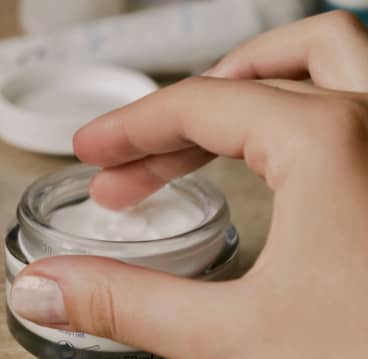 Salicylic Acid Peel
Salicylic Acid PeelThe 5 Best Skincare Ingredient Pairings To Try Now
We often focus on the active ingredient ‘don’ts,’ but these pairs are a match made in skincare heaven.
One of the key parts of creating an effective skincare routine is making sure that the products you’re using don’t counteract each other. Vitamin A derivatives (i.e. retinols and retinoids) shouldn’t be used at the same time as benzoyl peroxide, while alpha hydroxy acids (AHAs) don't always work well with vitamin C. Post-procedure (think: chemical peels and laser resurfacing), you’ll want to lay off most AHAs and beta hydroxy acids (BHAs) to avoid further sensitizing the skin.
So, while some active ingredient combos should be avoided, there are also a number of duos that play quite nicely together. When used at the same time, these fusions can even boost each other’s efficacy, leaving you with smoother, brighter, and healthier skin. Here’s what you need to know about some of the most potent skincare ingredient pairings you should consider adding to your routine.
1. Vitamin C + Vitamin E
Vitamin C is perhaps the best-known antioxidant in skincare, but its cousin, vitamin E, is more of a lowkey heavy hitter — the ingredient is probably in both your skincare routine and diet without you realizing it. “Vitamin C increases skin brightness and delivers stable antioxidant activity, while vitamin E is a hydrating and skin-comforting antioxidant,” explains Renée Rouleau, a celebrity aesthetician and founder of her eponymous skincare line.
Vitamin C is notoriously difficult to formulate with, but it most commonly appears in beauty products as ‘L-ascorbic acid’ and ‘tetrahexyldecyl (THD) ascorbate.’ Vitamin E is usually found on product labels under the name ‘tocopherol,’ and it’s included in everything from moisturizers to serums. When it comes to teaming up with vitamin C, you can expect the duo to brighten, hydrate, and protect the skin.
While you can use this pairing as part of your morning or evening routine, there are added benefits to pairing it with another skincare staple: sunscreen. “Researchers have determined that using a lotion or serum with both vitamins C and E under sunscreen actually provides four times the protection of sunscreen alone, so this is an added benefit,” Rouleau notes.
Product Picks:
- SkinCeuticals CE Ferulic: This fan-favorite utilizes a synergistic antioxidant combination of 15 percent L-ascorbic acid and vitamin E to protect the skin against environmental damage caused by free radicals, in addition to targeting fine lines and wrinkles with ferulic acid.
- Renée Rouleau Vitamin C & E Treatment: With two forms of vitamin C (tetrahexyldecyl ascorbate and ascorbyl methylsilanol pectinate) alongside vitamin E, Kakadu plum, and licorice root, this non-stinging formula gently brightens discoloration caused by the sun, hormones, breakouts, and more.
2. Niacinamide + Salicylic Acid
Vitamin B3 (a.k.a. niacinamide) can tackle everything from acne and pigmentation to wrinkles and barrier function. Salicylic acid, on the other hand, is a BHA approved by the United States Food and Drug Administration (FDA) to treat acne. “If you have significant breakouts, you can turn to more potent acne-fighting ingredients such as salicylic acid, retinoids, or benzoyl peroxide,” Rouleau says.
So, where does the niacinamide come into play? “One of the advantages of niacinamide is that it can be safely combined with any of these ingredients to give added benefits — like hydrating and soothing the skin — and this can be especially beneficial,” she explains. Anyone who has ever tried to treat a pimple knows how harsh and drying acne-fighters can be, but pairing them with niacinamide may be the solution your complexion has been craving. “Niacinamide has been shown to increase tolerability of ingredients like retinol and retinoids, especially in sensitive skin types,” Rouleau notes.
Product Picks:
- The Ordinary Salicylic Acid 2% Masque & Niacinamide 10% + Zinc 1%: Apply this budget-friendly salicylic acid mask for 10 minutes and rinse before grabbing the equally affordable niacinamide solution.
- Paula's Choice Niacinamide + BHA Duo: This prepackaged pairing contains the brand’s 2% BHA Liquid Exfoliant to clear pores, which allows the 10% Niacinamide Booster to better absorb and improve skin clarity, tone, and texture.
3. Retinoids + Peptides
There is a reason topical vitamin A is considered the gold standard of skincare — it can treat everything from acne to aging in a single product. “Vitamin A, found in retinol and retinoids, works to repair visible damage by encouraging collagen production, while reducing the look of wrinkles and large pores,” Rouleau explains.
Peptides are short-chain amino acids, and amino acids are the building blocks of proteins, like collagen, in the body. When applied topically, they permeate skin cells and help with growth and repair. “Peptides work to encourage tighter, firmer skin by strengthening chain links that hold skin layers together,” Rouleau explains. Pairing retinol and retinoids with peptides can increase their complexion-correcting properties. “Synergistically, they work for the greater good to achieve with a smoother, firmer look for the skin,” she says.
Product Picks:
- Renée Rouleau Advanced Resurfacing Serum: This P.M. serum employs both Palmitoyl Tripeptide-38 and 0.4 percent microencapsulated retinol to smooth and firm the skin, sans the sensitivity that usually accompanies vitamin A. Pro tip? You can (and should!) also apply the serum to your hands, neck, and décolleté for similar benefits.
- Olay Regenerist Retinol 24 Night Serum: This night serum features retinol, vitamin B3 (yes, niacinamide pairs well with pretty much everything), and Palmitoyl Pentapeptide-4 (amino-peptide) to visibly improve fine lines and wrinkles, brightness, firmness, and pore size.
4. Sunscreen + Vitamin C
At this point, you know you should be using sunscreen everyday (rain or shine!). But, as we briefly mentioned earlier, pairing your SPF with vitamin C can better protect the skin from the sun and free radical damage. Is there a bigger win-win?
A 2013 study on the effectiveness of antioxidants with and without sunscreen found that:
Sunscreens when properly applied prevent UV-induced erythema and thymine dimer mutations that contribute to cutaneous carcinogenesis [skin cancer]. However, sunscreens block only 55 percent of the free radicals produced by UV exposure...To optimize UV protection, it is important to use sunscreens combined with a topical antioxidant. Vit. C does not absorb UV light but exerts an UV-protective effect by neutralizing free radicals, while this effect is not seen with sunscreens. Under laboratory conditions, it has been shown that application of 10 percent topical Vit. C showed statistical reduction of UVB-induced erythema [skin reddening] by 52 percent and sunburn cell formation by 40-60 percent.
Product Picks:
- BeautyStat Universal C Skin Refiner & Fenty Skin Hydra Vizor Invisible Moisturizer SPF 30: Your favorite vitamin C and sunscreen will do, but we’re also fans of layering the BeautyStat serum with 20 percent pure vitamin C (L-ascorbic acid) under the weightless sunscreen-moisturizer hybrid from Fenty.
- Supergoop Daily Dose Vitamin C + SPF 40 Serum: Prefer to get all the benefits in one step? This two-in-one formula features a proprietary Vitamin C Brightening Complex (10 percent vitamin C, Kakadu plum extract, and niacinamide) alongside a broad spectrum SPF 40.
5. Tea Tree Oil + Hyaluronic Acid
Super-hydrator hyaluronic acid (HA) goes with pretty much everything, but, when it’s combined with acne-busting tea tree oil, it will help soothe any possible irritation the natural remedy may cause. “Tea tree oil and hyaluronic acid both make a great pairing when used in acne products,” Rouleau notes.
For the uninitiated, tea tree oil is derived from the leaves of the tea tree, Melaleuca alternifolia, and hailed for its anti-inflammatory and antibacterial properties. HA, on the other hand, is a humectant that can hold 1,000-times its weight in water. What happens when they’re combined? “Tea tree reduces microbial count on the skin’s surface to interrupt the breakout cycle, and hyaluronic acid delivers comfort and hydration to keep acne-prone skin in balance,” Rouleau shares.
Product Picks:
- Renée Rouleau Rapid Response Detox Masque: In this weekly clarifying treatment, tea tree oil and hyaluronic acid (seen on the ingredient label as ‘sodium hyaluronate’) heal blemishes, banish bacteria, calm redness (from acne or rosacea), and soothe sensitivity for a more balanced complexion.
- Innisfree My Real Squeeze Tea Tree Purify Mask: If you're looking for a quick fix, 10 to 20 minutes with this tea tree, HA, green tea, and aloe-packed biodegradable sheet mask is all you need to hydrate and calm breakout-prone skin.
All products featured are independently selected by our editors, however, AEDIT may receive a commission on items purchased through our links.
More Related Articles
Related Procedures

AI Plastic Surgeon™
powered by'Try on' aesthetic procedures and instantly visualize possible results with The AI Plastic Surgeon, our patented 3D aesthetic simulator.

